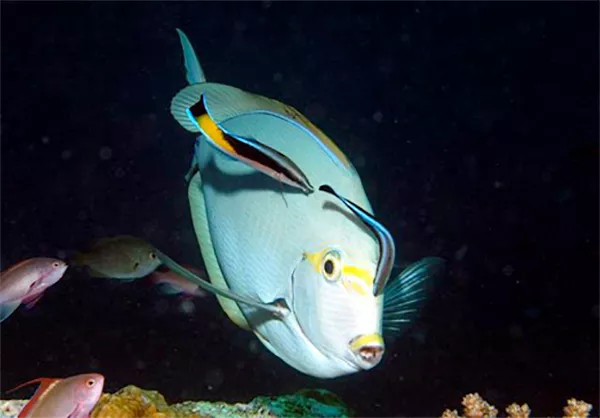Pairs of cleaner fish cooperate and give better service on the coral reef
Cooperation in nature often works as an exchange of goods or services between two different parties. In an article in the recent issue of the scientific magazine Nature researchers from Stockholm University have studied how certain fish on coral reef keep other species of fish clean.
The Bluestreak cleaner wrasse (Labroides dimidiatus) helps other fish species by eating parasites from their skin. The cleaner's favourite food is, however, the nutrient-rich mucus layer that covers the client fish.
Bluestreak cleaner wrasse eat parasites that have attached themselves to the client fish – but sometimes the cleaner fish can't resist the temptation to take a bite out of the client's mucus layer.
"Because it's a painful bite the client fish ends the cooperation, shakes off the cleaner fish and swims away," says Olof Leimar, professor at Stockholm University's Department of Zoology.
The cleaning is sometimes carried out by a single fish and sometimes by a pair of fish that together serve the same client. The researchers wanted to know if a pair of fish gives better or worse service quality than a single cleaner fish.
"We used a combination of methods – including theoretical models, field observation, and laboratory experiments – in order to study the differences between when the cleaner work alone and when in pairs. Our theoretical model indicates that as long as the cleaners cooperate and watch each other's behaviour they should avoid taking that tempting bite. In such cases, the quality of service for the client fish is better than when the cleaner works alone. Our field observations and laboratory experiments show the same results," says Olof Leimar.
Another interesting finding is that the pair always consists of a male and a female – and that the female contributes more than the male to the improved quality of service.
The pattern of behaviour of both the females and males needs to be studied further. The males are larger than the females. If the female takes a bite of mucus the male will often chase the female. This could mean that the size difference within the pair leads to a situation where there is a threat of punishment
Olof Leimar
- Log in to post comments


























